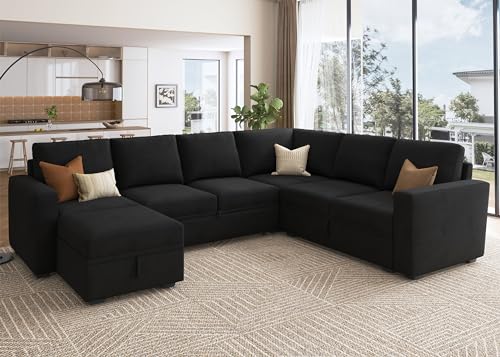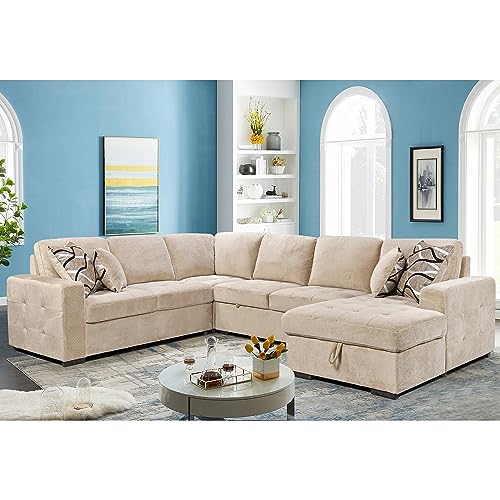What Are u shaped sectional modern Shaped Valleys?
A U-shaped valley is an ancient geological formation with steep, high sides and an elongated or flat valley bottom. These valleys are formed by glaciation. They are often filled with lakes rivers, sandtraps, sandtraps on golf course, kettle lakes (water hazards), or other natural features.
The process of erosion caused by glacial erosion creates U-shaped valleys, caused by the plucking of rocks from the sides and bottom of the valley. These valleys can be found in mountainous regions all over the world.
Glaciers are the primary reason for forming them.
Glaciers are huge bodies of ice that form and then move down mountains. As they erode the landscape they create u shaped Couch with ottoman-shaped valleys with flat floors and steep sides. These are different from the river valleys, which tend to be shaped in the shape of the shape of a V. Although glacial erosion can occur everywhere however, these valleys tend be more prevalent in mountainous areas. They are so distinct that it is easy to discern whether the landscape was shaped by glaciers or rivers.
The formation of a U-shaped valley begins with an existing V-shaped river valley. As the glacier is eroding the landscape, it encroaches upon the V-shaped river valley, and forms an inverted U shape. The ice also scoures the surface of the land, which causes the sides of the valley to have high and straight walls. This process is known as glaciation and requires a lot of strength to scour earth this way.
As the glacier continues to degrade the landscape, it makes the valley larger and deeper. The glacier’s ice is less abrasive than the rocks. As the glacier moves through the valley it also causes abrasion of the surfaces of the rocks. This pulls the weaker rocks away from valley walls, a process known as plucking. These processes work together to widen, deepen and smooth the U-shaped valley.
This process also causes small valleys to “hang over the main one. The valley may be filled with ribbon lakes that are formed when water flows through the glacier. The valley is also distinguished with striations and ruts, till on the sides, as well as moraines and till on the floor.
U-shaped valleys are commonplace all over the world. They are most often found in mountainous regions, such as the Andes Mountains, Alps Mountains, Himalaya Mountains, Caucasus Mountains, and Rocky Mountains. In the United States, they are usually found in national parks. Examples include Glacier National Park and the Nant Ffrancon Valley in Wales. In some cases, valleys can extend to the ocean and transform into Fjords. This is a natural process that occurs when the glacier melts. It could take thousands of years to create these valleys.
They are deep
U-shaped valleys are characterized by steep sides that curve towards the bottom, and a wide flat valley floor. They are formed by rivers valleys that were filled with glaciers during the Ice Age. Glaciers degrade the valley floor through abrasion and plucking and cause the valley to get deeper and broaden more equally than a river would. These kinds of features can be seen in mountainous regions across the globe, including the Andes Mountains, Alps Mountains, Himalayas Mountains, Rocky Mountains and New Zealand.
The erosion of a river valley may transform it into a u-shaped one by increasing its depth and expanding it. The erosive power of the glacier also causes smaller side valleys to hang above the main valley which is often marked by waterfalls. These types of features are referred to as “hanging valleys”, because they hang over the main valley, when the glacier recedes.
These valleys may be covered in forest and may contain lakes. Some valleys are dry and are used for farming, while others are swamped and can be explored as part of a kayaking or hiking excursion. A majority of these valleys are in Alaska which is where glacial melt is most pronounced.
Valley glaciers are massive river-like flows of ice that slowly slide down the slopes of mountains during a glaciation. They can extend to depths of over 1000 feet and are the dominant type of alpine terrains that suffer from valley erosion. They consume the rocks on the bottom of a valley, leaving the area with depressions or holes, which are then filled with water. The lakes that result are wide and long and are found on the tops of certain mountains.
 Another type of valley, a glacial trough is a U-shaped valley that extends into salt water and forms the Fjord. They are prevalent in Norway and are referred to as fjords, but are also found in other areas of the world. They are created by melting ice and are visible on maps of the world. They are distinguished by steep sides and rounded sides that form an U-shape. The walls of troughs are typically constructed from granite.
Another type of valley, a glacial trough is a U-shaped valley that extends into salt water and forms the Fjord. They are prevalent in Norway and are referred to as fjords, but are also found in other areas of the world. They are created by melting ice and are visible on maps of the world. They are distinguished by steep sides and rounded sides that form an U-shape. The walls of troughs are typically constructed from granite.
They are sloping
A U-shaped valley is an important geological feature with steep, high sides and a rounded bottom. They are quite common in mountainous regions and are often carved by glaciers. This is due to glaciers being slow moving rivers of ice that move downhill, scouring land as they go. Scientists once believed that glaciers wouldn’t be able to carve valleys due to being so soft. However, now we know that they are able to.
Glaciers create unique U-shaped valleys as a result of the processes of abrasion and plucking. These processes widen, steepen and deepen V-shaped valleys into a U shape by eroding. They also change the slopes of the valley floor. These changes happen in the front of a glacier as it traverses a valley. This is the reason why the top of a U-shaped valley is usually wider than the bottom.
Sometimes, U-shaped valleys can be filled with lakes. These lakes are called kettle lakes. They form in hollows that were created out of the rock by the glacier, or were dammed by moraine. The lake may be a temporary feature as the glacier melts or it may remain after the glacier has receded. They are usually located in conjunction with cirques.
A flat-floored Valley is another type of valley. It is a valley that is formed by streams that degrade the soil, however it doesn’t have the same slope as an U-shaped valley. They are typically found in mountainous areas and are often older than other kinds of valleys.
 There are a variety of valleys in the world, and each has a unique appearance. The most well-known is a V-shaped valley but other types include U-shaped valleys as well as the rift valleys. A rift valley is formed when the earth’s surface splits apart. They are typically narrow valleys that have steep sides. This is evident in the Nant Ffrancon Valley, located in Snowdonia.
There are a variety of valleys in the world, and each has a unique appearance. The most well-known is a V-shaped valley but other types include U-shaped valleys as well as the rift valleys. A rift valley is formed when the earth’s surface splits apart. They are typically narrow valleys that have steep sides. This is evident in the Nant Ffrancon Valley, located in Snowdonia.
They are wide
U-shaped valleys are distinguished by their broad bases unlike V-shaped ones. They are typically found in mountains and are formed by glaciers. Glaciers are huge blocks of snow and ice that erode the landscape as they move downhill. They degrade valleys by friction and abrasion. This is referred to as the scouring. The glaciers break up the landscape in a distinctive U-shaped pattern. These valleys, also referred to as U-shaped valleys, can be found in a variety of places around the world.
These valleys are formed when glaciers erode river valleys. The glacier’s slow movements and weight degrades the valley’s floor and sides creating a distinct U shape. This process is known as glacial erosion and has resulted in some of the most breathtaking landscapes on Earth.
These valleys are sometimes referred to as glacial troughs or trough valleys. These valleys are found all over the world, but they are particularly in areas with glaciers and mountains. They range in size from a couple of meters to hundreds of kilometers. They also vary in length and depth. The deeper the valley is, the greater the variation of temperature will be.
A fjord, or a ribbon lake is formed when a U-shaped gorge fills with water. The ribbon lakes form in the valleys in which the glacier has eroded the rock with less resistance. They may also form in valleys, where the glacier has been stopped by a wall.
Aside from U-shaped valleys, ribbon lakes can also contain glacial features such as hanging valleys, erratics and moraine dams. Erratics, or huge boulders, are deposited by glaciers as the latter moves. The erratics can be used to define the boundaries between glaciated areas.
These smaller valleys are left hanging” above the main valley that was created by the glacier. These valleys are not as ice-filled and are not as deep. They are formed by tributary glaciers, and are usually covered by waterfalls.